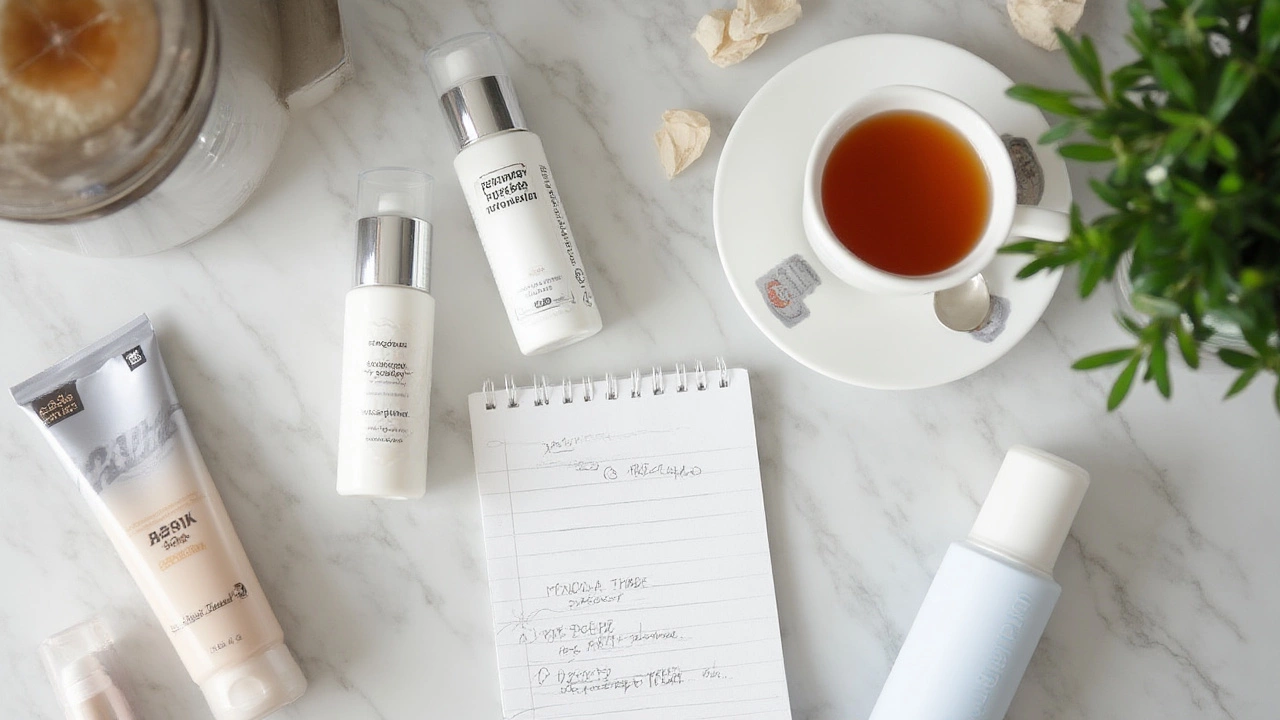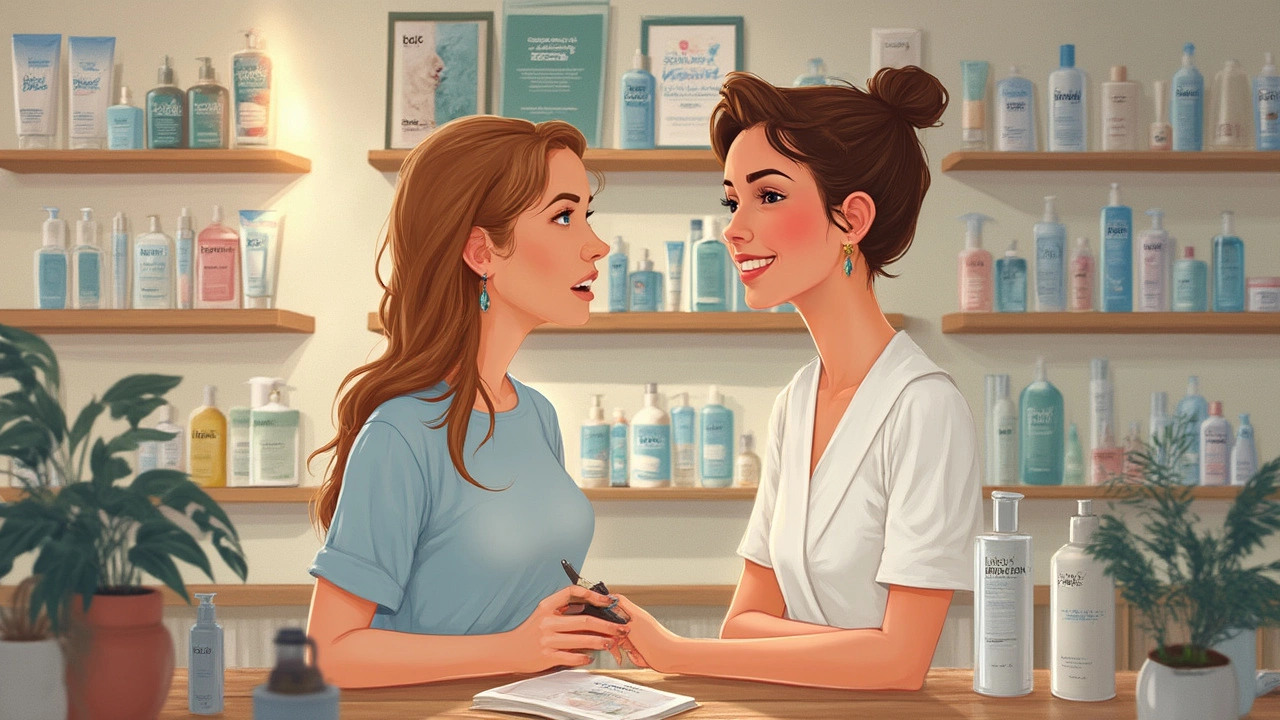Ever caught yourself staring at those flawless faces on Instagram, wondering what kind of wizardry is behind their smooth, glowy skin? You’re definitely not alone. The truth is, everyone with good skin started somewhere, and usually, it wasn’t with expensive serums or dramatic 10-step routines. More people than you’d think are quietly feeling their way through cleansers, toners, and mystery jars, asking the same question: Where do I even start? The world of skin care can feel like a grocery store with no labels—colorful, confusing, and a little overwhelming. Let's cut through the noise and nail down exactly what you need to know to build a skin care routine that actually works for beginners, without the fluff, the jargon, or the pressure to spend half your salary on fancy bottles.
Understanding Your Skin: The Real Foundation
Okay, before you run to your nearest drugstore and blow your paycheck on whatever’s trending on TikTok, there’s one step too many people skip: figuring out what kind of skin you actually have. Think of your skin like a house—you wouldn’t start painting without checking for cracks, right? Most skin falls into one of these groups: oily, dry, combination, or sensitive. Not sure where you land? Here’s a tip: Wash your face with a basic cleanser, don’t put anything else on, and wait an hour. Is your whole face shiny? That’s oily. Tight and flaky? Dry. Shiny in some places, dull in others? Combination. Red or itchy? Probably sensitive.
Knowing your type matters more than any miracle ingredient. According to a 2022 study by the American Academy of Dermatology, up to 70% of people misidentify their skin type, which leads to using the wrong products and making things worse. That’s like wearing off-season clothes all year—it’s just uncomfortable and pointless. Even if labels like “for all skin types” sound reassuring, they can backfire. For example, some foaming cleansers feel fresh but can strip natural oils and make irritated or dry skin worse. And oil-free might sound smart if you have acne, but stripping all the oils ramps up your skin's oil production, leading to more breakouts. Kind of a cruel joke, really.
Here’s what you’ll want to keep in mind for each type:
- Oily: Go for water-based, non-comedogenic (won’t clog pores) products.
- Dry: Look for creamy cleansers, hydrating serums, and avoid alcohol-based toners.
- Combination: Gel cleansers and balancing creams work best. You might even use different products for different areas.
- Sensitive: Fragrance-free, gentle formulas, and keep your routine simple—less is more here.
If you’re still stumped, it’s totally fine to ask a dermatologist for a quick consult—so many do telehealth now, and a 15-minute chat can save you a year of failed experiments. Or, keep a little skin diary. Jot down what you use and how your skin reacts. Patterns pop up quicker than you’d expect.
As a fun side note, did you know your skin actually renews itself every 27-30 days? That means the changes you make today show up on your face in about a month. So don’t panic if your skin doesn’t look instantly better. It’s playing the long game, just like you are.

The Core Routine: Keep It Simple, Keep It Smart
Let’s talk about the basic pillars of a beginner skin care routine. No, you really don’t need 15 products and a PhD in ingredient decoding. Most dermatologists—like the much-followed Dr. Michelle Henry—agree that the gold standard is a three-step routine: cleanse, moisturize, and protect. That’s it. Any more than that, and you’ll likely spend more time confused than glowing.
Here’s the breakdown of each key step and why you shouldn’t skip them:
- Cleanser: This is your skin’s reset button, washing away sweat, oil, and pollution. Use something gentle—too harsh and you’ll just end up with red, angry skin. Massage a dime-sized amount into damp skin for 30-60 seconds, morning and night.
- Moisturizer: Regardless of how oily you think your skin feels, you still need this. Moisturizer strengthens your skin barrier (like the bouncer for your skin), keeps the water in and bad stuff out. Find one that matches your skin type, and use it right after cleansing.
- Sunscreen: Think sunscreen is just for beach days? Not even close. Sun damage happens every time you’re exposed, even on cloudy days, and it sneaks up on you—a whopping 80% of visible aging comes from the sun. Dermatologists insist on SPF 30 or higher, every single morning, even if you’re stuck at home all day. UVA rays punch through windows and clouds like they own the place.
Here’s what a simple routine could look like, morning and night:
| Step | Morning | Night |
|---|---|---|
| Cleanse | X | X |
| Moisturize | X | X |
| Sunscreen | X | - |
According to the Skin Cancer Foundation, daily use of sunscreen reduces the risk of skin cancer by about 40%. That’s not just marketing—those are real numbers. Not to mention, it keeps dark spots and wrinkles at bay.
You might be wondering about all those extras—toners, serums, exfoliators, masks. Those aren’t bad, but think of them as add-ons, not must-haves. If you want to dip your toes in, start slow: add one new product at a time and give it two to four weeks. That way, if your skin flips out, you’ll know exactly which one caused it. Oh, and patch test. Dab a bit on your inner wrist or behind your ear and wait 24 hours. It takes two minutes and saves you a week of regret.
There’s a bunch of hype around ingredients like hyaluronic acid, vitamin C, and niacinamide. While these can definitely make a difference, they work best as part of a steady routine—not miracle fixes. I once tried to copy a fancy “skin cycling” trend with my spouse, Harvey, and, confession: We both wound up with irritated, red skin for a week. Simpler is seriously better, especially at the start.
“A good skin care routine is less about the number of steps, and more about the consistency of care,” - Dr. Mona Gohara, Associate Clinical Professor of Dermatology at Yale School of Medicine
So, there you have it. Nail the basics, stick with it, and save the bells and whistles for down the road if you want to step it up.

Sticking With It: Staying Consistent and Avoiding Common Pitfalls
Here’s the part where most people secretly give up on their skin care goals: consistency. Even the best skin care products are useless if they only touch your face on special occasions. The trick is tying your new routine to something you already do every day. For a lot of us, it’s brushing your teeth or winding down with Netflix. If you pair your skin care with that, it’ll stick before you know it.
Some rookie mistakes trip up beginners, and even people who know better sometimes fall for them. For instance, scrubbing your face like you’re sanding a table actually does more harm than good. Over-exfoliating strips your skin, which causes redness, breakouts, and that tight, squeaky feeling we’ve been tricked into thinking is clean. Experts recommend exfoliating just one or two times a week, max. Also, sleeping in makeup? No matter how tired you are, just don’t. Leftover makeup clogs pores, ramps up breakouts, and makes you look older faster. Take two minutes—your skin will thank you for years.
Another thing people don’t talk about enough: your skin care products actually expire. Toss anything that smells funky or changes color. Using old sunscreen, for example, can mean you think you’re protected, but you’re not. The FDA requires every sunscreen to have an expiration date for that reason. And don’t fall for the “natural” label as a sign it’s always safer. Poison ivy is natural, after all. Stick to fragrance-free, dermatologist-tested options if you’re unsure.
Getting impatient is normal. You might not notice much up front, but underneath? Your skin is busy repairing and rebuilding. Tiny improvements add up. If you suddenly flare up or develop a rash, scale back and check ingredients—sometimes a new product will be the culprit. And just so you know, actives like retinol and acids can make skin more sensitive to sunlight, so never skip sunscreen if you’re trying stronger stuff.
If you like tracking things, try snapping a selfie every week or noting how your skin feels. Small wins—like less redness, fewer breakouts, or just feeling smoother—are worth celebrating. Even a little progress means you’re heading in the right direction.
Need more motivation? Here’s a crazy stat: According to a 2023 beauty survey, people who stick to a simple, consistent routine for at least eight weeks are 60% happier with their skin than those who switch products constantly or overload their routine. Persistence really pays off.
So go easy on yourself. Keep your skin care routine simple, steady, and stress-free—and maybe even a little fun. Who knows? Your future self (and your mirror) might thank you.
